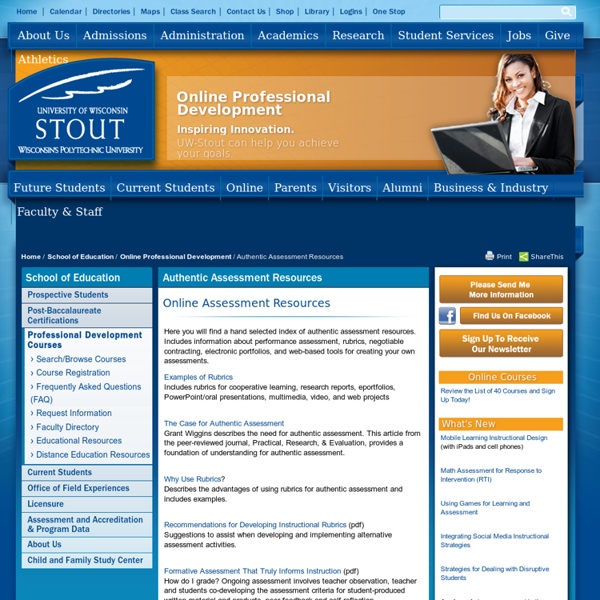Authentic Assessment and Rubrics

Assessment and Rubrics
A collection of rubrics for assessing portfolios, group work/cooperative learning, concept map, research process/ report, PowerPoint, oral presentation, web page, blog, wiki, and other social media projects. Quick Links to Rubrics Social Media Project Rubrics Wiki RubricCriteria for assessing individual and group Wiki contributions. Blog RubricAssess individual blog entries, including comments on peers' blogs. Twitter RubricAssess learning during social networking instructional assignments. Discussion, Teamwork, and Group Work Rubrics Online Discussion Board RubricAssessing ability to share perspectives, refine thoughts through the writing process, and participate in meaningful discussionPrimary Grade Self-Evaluation Teamwork Rubric (PDF)Features of a sandwich to graphically show the criteria Upper Elementary Teamwork RubricKaren Franker's rubric includes six defined criteria for assessing team and individual responsibility PowerPoint and Podcast Rubrics ePortfolio and Web Page Rubrics
Results on ReadWriteThink
Find content from Thinkfinity Partners using a visual bookmarking and sharing tool. More Your students can save their work with Student Interactives. More Home › Results from ReadWriteThink 1-10 of 499 Results from ReadWriteThink Sort by: Classroom Resources | Grades 3 – 12 | Printout | Assessment Tool Readers Theatre Rubric This rubric is designed to be used for any Readers Theatre performance. page | 1 2 3 4 5 6 7 8 9 10
Rubrics and Rubric Makers
As we all know grading is the most necessary procedures of our career. It might just be me, but grading is the bane of my existence. Do you feel the same way? Grading large works, especially towards the end of the school year, feels like it is an endless and mindless process. I remember a few years back when I helped grade over 4,000 essays from a neighboring school district. The only thing I can relate the feeling of completing that grading session was giving birth to my daughter. When you grade large works of any kind it is very difficult for even the most competent people to remain 100% objective. Not only do rubrics lead to better equality in assessment, but it gives you standard that will help you understand exactly what you are looking for in the quality of work. Rubrics are essential to grading student assignments effectively. Rubrics make grading quicker, clearer, and more objective. Rubrics By Category General | Language Arts | Math | Process | Science | Social Studies
Related:
Related:



